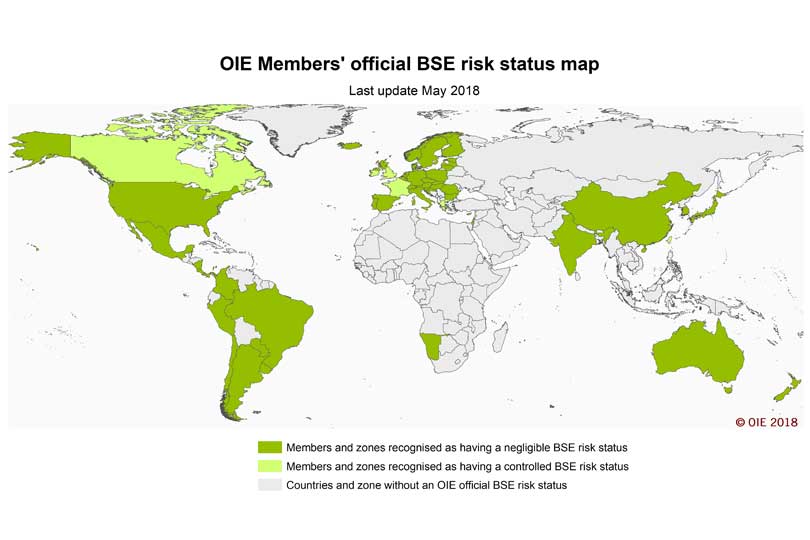By Jessica Domel
Multimedia Reporter
The U.S. Department of Agriculture (USDA) reports there is no present risk to the food supply or human health following confirmation of a rare case of bovine spongiform encephalopathy (BSE) in the United States earlier this month.
“The veterinary services laboratory diagnosed an atypical H-type BSE in a six-year-old mixed-breed beef cow that was located in Florida,” USDA’s Chief Veterinarian Dr. Jack Shere said in an interview with USDA’s Newsline.
BSE, a neurologic disease in cattle, is not contagious and exists in two types—atypical and classical.
The atypical form of BSE, sometimes referred to in the media as “mad cow,” is rare and usually occurs in cattle eight-years-old or older.
“This is a spontaneously-generated type of BSE that occurs in all cattle all over the world,” Shere said.
The classical form was the type reported in the United Kingdom in the late 1980s.
The cow in Florida never entered slaughter channels and at no time presented a risk to the food supply or to human health, USDA reports.
The infected cow was tested at Colorado State University’s Veterinary Diagnostic Laboratory as part of routine surveillance of cattle deemed suitable for slaughter.
“We do want to be as transparent as we can be when we find these and to let the world know as soon as possible,” Shere said.
USDA’s Animal and Plant Health Inspection Service’s National Veterinary Services Laboratories and veterinary officials in Florida continue to gather information on the case.
The U.S. has a longstanding system of safeguards against BSE to protect both human and animal health.
The process includes removing any materials, animal or parts of an animal, which could contain BSE from other animals and slaughter channels.
A strong feed ban also protects cattle from the disease.
There’s ongoing surveillance for BSE across the nation that allows USDA to detect the disease, even at very low levels, in the U.S. cattle population.
“We have one of the best surveillance systems in the world for this disease, and we go well beyond what OIE (the World Organisation for Animal Health) has asked us to do as far as looking for this,” Shere said.
USDA samples all neurologic cases reported to them.
“Animals that have any type of staggering or any types of lameness presented to them when they’re presented at slaughter and any animals that die mysteriously on the farm, we sample all those animals,” Shere said.
Since the cow found in Florida had the atypical type of BSE, the United States’ rating with the World Organisation for Animal Health (OIE) will not change from “negligible BSE risk.”
“That means it has never been found in this country from a domestic origin animal other than atypical,” Shere said.
The OIE recognizes atypical forms of BSE occur spontaneously in all cattle populations at a very low rate.
“Therefore, this finding of an atypical case will not change the negligible risk status of the United States and should not lead to any trade issues,” a USDA press release said.
There is no association of atypical BSE with contaminated feed or ingestion of infected materials.

